
December 28, 2025

April 2005 | Vol. IV - No. 4
Videos: The Latest Teaching Tools for Tots
For additional reporting on this subject, see TDmonthly’s “Sophistication, Selection Power Children’s Media Market.”
First there was “Sesame Street,” then “Barney & Friends” and “Teletubbies.” Today, the newest generation of educational media intended for children ages 0 to 5 comes in the form of DVDs, with many nascent companies attempting to find a niche in the market.
Sales of educational DVDs accounted for 13.1 percent of total DVD sales in 2004, reports NPD Group, with fourth quarter sales as high as 16.7 percent of the total market. Sales of baby videos have tripled over the past two years, with annual sales at approximately $100 million, according to BusinessWeek.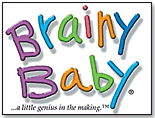
Two pioneers of the educational video market for toddlers were The Brainy Baby Company (ToyShow), which introduced its first educational videos in 1996, and The Baby Einstein Company (ToyShow), which began releasing educational DVDs in 1997.
Currently, there are hundreds of videotapes and DVDs for infants on the market produced by more than a dozen companies, and the market is ripe as younger and younger children are starting to watch television.
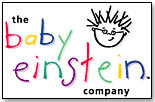
According to an October 2003 report issued by the Henry J. Kaiser Family Foundation, a non-profit organization which studies major health care issues, 74 percent of all infants and toddlers surveyed had viewed television before age 2, and 43% watched television every day.
Additionally, children age 6 and under spend an average of two hours a day using screen media, about the same amount of time they spend playing outside and far more than the 39 minutes a day that they spend reading or being read to. And more than a quarter of children under age 2 have a television in their room.
Different Products for Different Needs
In 1999, the American Academy of Pediatrics acknowledged that children under age 2 should not watch television. The Academy reasoned that screen media is not appropriate for young children because it does not foster interaction with humans, promote handling of environmental substances like blocks or sand, or encourage creativity, imagination or problem solving. 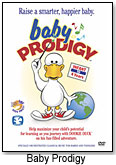
However, since issuing the statement, the entertainment industry has responded by reshaping the majority of their products to engage children in ways stipulated by the AAP.
The Baby Einstein Company(ToyShow), Baby Prodigy, and The Brainy Baby Company (ToyShow) concentrate on general instruction to help build areas like vocabulary and problem solving, though their methods vary greatly.
Baby Prodigy videos, for instance, feature a main character for infants and toddlers to identify and learn a number of lessons with, while Brainy Baby videos each teach a specific skill, such as learning the ABC’s, identifying animals and speaking French.
 Another company, Baby Bumblebee (ToyShow), also concentrates on vocabulary building, and is particularly effective in helping children with language delays.
Another company, Baby Bumblebee (ToyShow), also concentrates on vocabulary building, and is particularly effective in helping children with language delays.
 Companies like Tiny Tot Sports (ToyShow), athleticBaby (ToyShow)and BabyPro (ToyShow) focus on sports-themed videos, in response to concerns that the influx of media products has contributed to the rise in childhood obesity rates across the country.
Companies like Tiny Tot Sports (ToyShow), athleticBaby (ToyShow)and BabyPro (ToyShow) focus on sports-themed videos, in response to concerns that the influx of media products has contributed to the rise in childhood obesity rates across the country.

“In today’s age of early childhood obesity, we want to get children introduced to physical activity at an early age,” says Jack Daddona Jr., president of sales and marketing for Tiny Tot Sports. “Our research has shown that after watching as little as 10 minutes of our videos, toddlers begin imitating the behaviors and playing actively.” 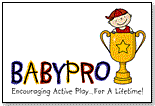
Daddona says Tiny Tot videos focus on “getting children up and active through upbeat vibrant music, not classical music that will put them to sleep.” Still, several companies, including Baby Prodigy, utilize classical music because of the belief that exposure to classical music will make a child smarter, a phenomena known as the Mozart Effect. 
One company, Lots to Learn (ToyDirectory), markets its products as parent-child interactive videos – tools which “provide preschoolers with an opportunity to share the learning experience with their parents,” according to the company Web site.
A September 2004 report issued by Zero To Three, a non-profit organization devoted to furthering the healthy development of babies, found infant television viewing to be most effective when parents interacted with their children as they watched and used the viewing as inspiration for communication and instruction.
According to the report’s authors, Deborah Weber of Fisher-Price and Dorothy Singer of Yale University, “Media have the potential to expose children to a variety of experiences that they might not otherwise have the opportunity to learn about or engage in.”
Companies like World Notes (ToyDirectory), dedicated to teaching infants about world cultures, and The Language Workshop for Children (ToyDirectory)and Ciao Kids (ToyDirectory), which produce language instruction videos, provide a sophisticated level of instruction for slightly older children (ages 2 and up) and bring kids to distant places they would not typically see.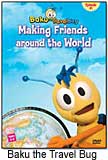

Says Matt Crenshaw, creator and producer of World Notes’ Baku the Travel Bug DVD series, “Other children’s programs have looked at modes of travel, but no other travel series has exposed children to the true magic of travel: visiting new places and meeting new people. The program is devoted entirely to awakening young minds to the wide world around them.”
Infant media products are here to stay. The challenge of researchers and developers is to better understand what children can comprehend and what constitutes an effective teaching aid with entertainment capabilities. As more companies dedicate themselves to video production, the plethora of choices may initially disconcert parents, but the competition will likely be good in augmenting quality.
Copyright © 2025 TDmonthly®, a division of TOYDIRECTORY.com®,
Inc.






 Another company, Baby Bumblebee (ToyShow), also concentrates on vocabulary building, and is particularly effective in helping children with language delays.
Another company, Baby Bumblebee (ToyShow), also concentrates on vocabulary building, and is particularly effective in helping children with language delays.  Companies like Tiny Tot Sports (ToyShow), athleticBaby (ToyShow)and BabyPro (ToyShow) focus on sports-themed videos, in response to concerns that the influx of media products has contributed to the rise in childhood obesity rates across the country.
Companies like Tiny Tot Sports (ToyShow), athleticBaby (ToyShow)and BabyPro (ToyShow) focus on sports-themed videos, in response to concerns that the influx of media products has contributed to the rise in childhood obesity rates across the country. 



